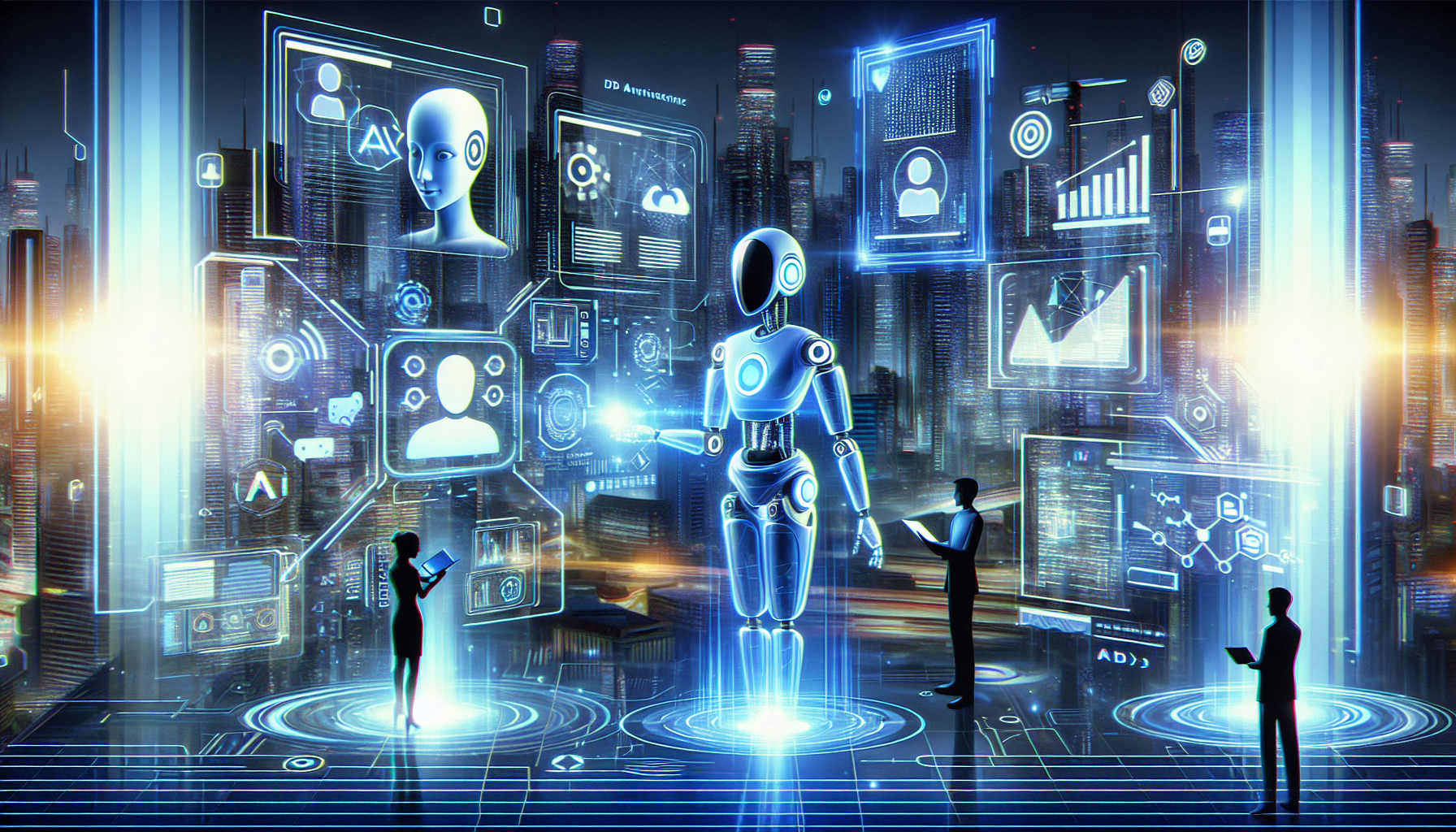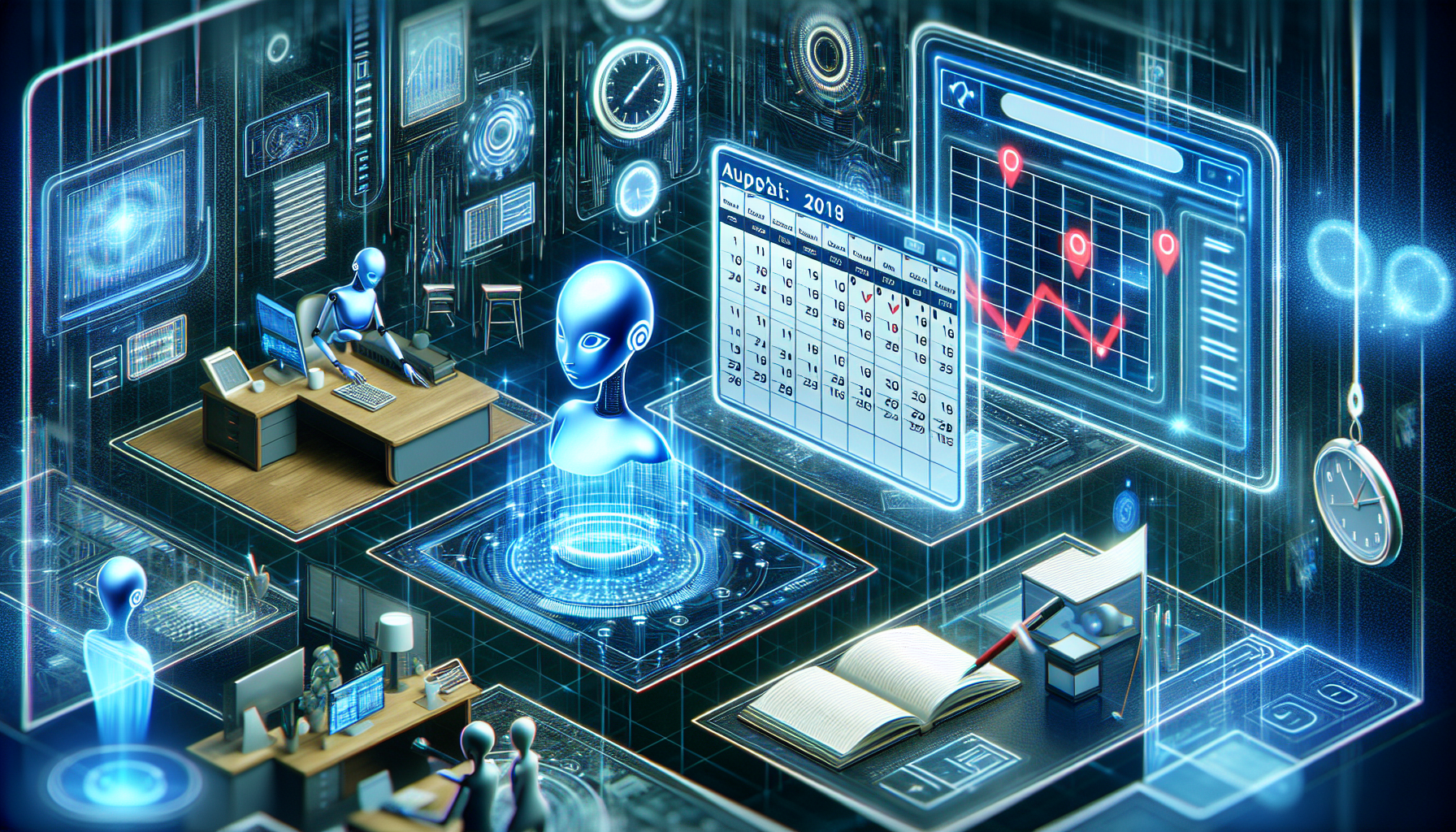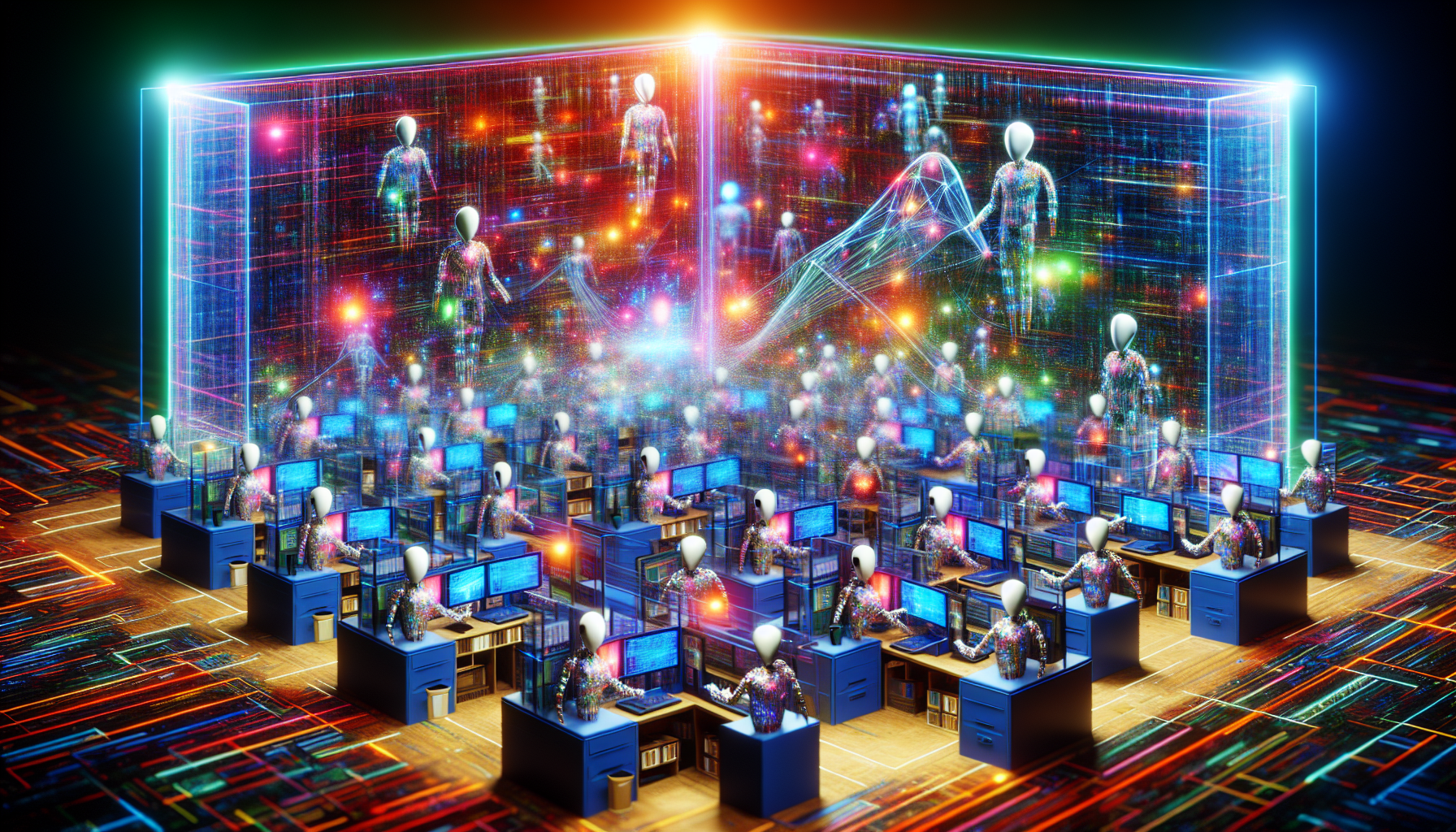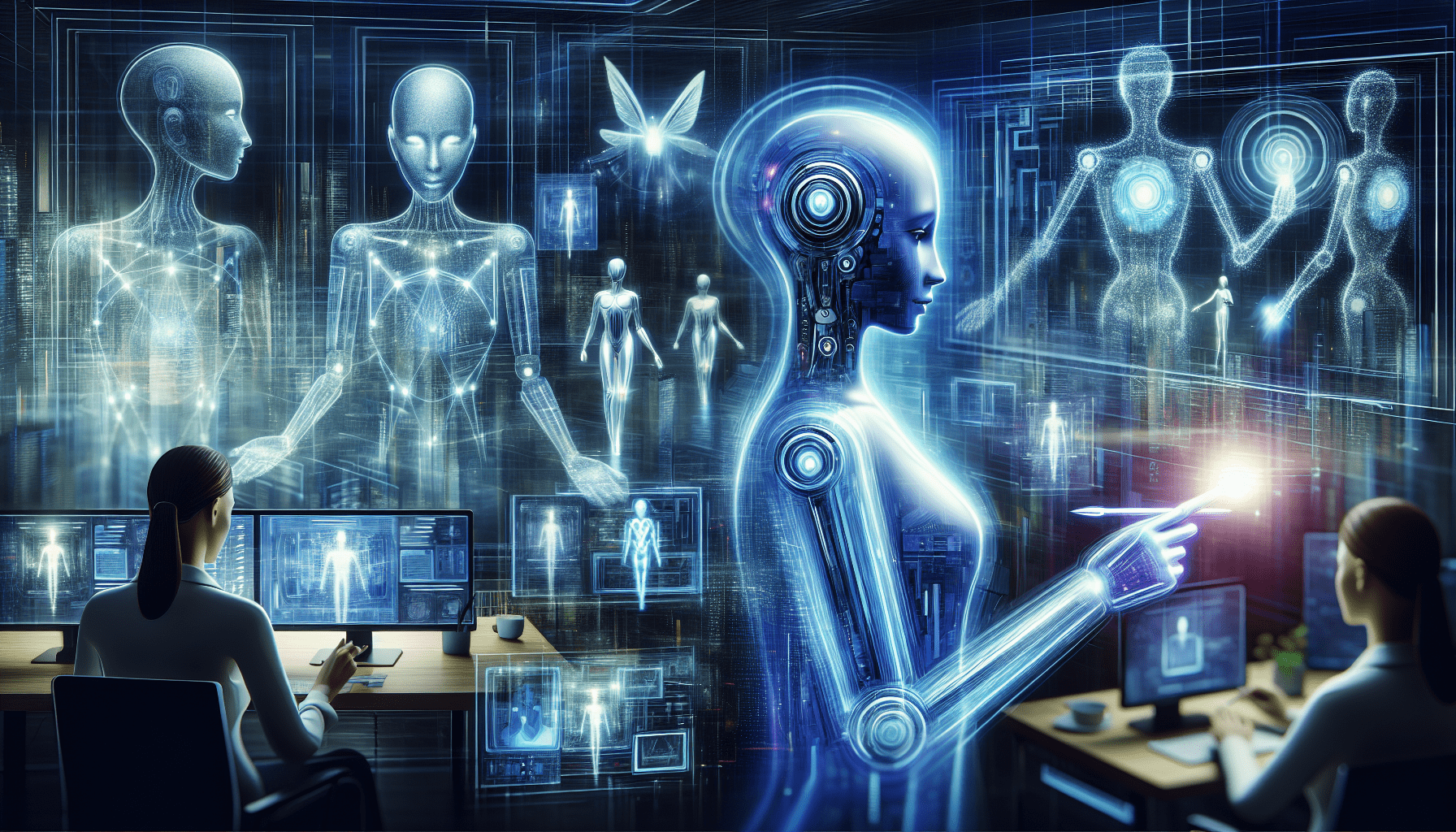Can AI really achieve the so-called Holy Grail of work: accomplishing 60 hours’ worth in a standard 40-hour work week or maybe even 30? This is no longer a question of ‘if’, but ‘how’. With personal AI assistants, professionals across industries are tapping into unprecedented levels of productivity by automating mundane tasks, optimizing schedules, and harnessing data with rapid precision. While the dream of working smarter, not harder, inches closer to reality, this article unpacks the capabilities, strategies, and real-world evidence that answer the question, “Will your personal AI assistant allow for 60 hours of productivity in a 40-hour work week?”
Key Takeaways
-
AI-driven productivity advancements enable professionals to potentially achieve 60 hours worth of work within a 40-hour workweek through hyper-efficiency, task automation, and optimized time management.
-
Emerging AI tools transform mundane tasks such as scheduling, email management, research, and data analysis, thereby boosting business productivity by an average of 66% and allowing more time for innovation and strategic growth.
-
The integration and ethical implementation of AI in the workplace are imperative for augmenting human labor without compromising job security, privacy, and the quality of outcomes while fostering an organizational culture adaptable to continuous AI evolution.
The Dawn of Hyper-Efficiency

As the sun rises on the era of hyper-efficiency, personal AI assistants stand at the forefront, redefining our benchmarks for productivity. With AI’s advanced algorithms at our disposal, workdays morph into a high-speed conduit of streamlined workflows and automated routines.
The virtuosity of AI technology in optimizing tasks and workflows means that what was once a week’s worth of labor can now be compressed into a fraction of the time, propelling us towards a future where the scales of work and life balance with unprecedented grace.
Understanding AI-Driven Productivity
Step into the realm of AI-driven productivity and uncover a landscape where virtual assistants, powered by generative AI capabilities, transform the mundane into the exceptional. With advanced technologies like deep learning and natural language processing at their core, these virtual companions—including virtual assistants like Google Assistant and Fireflies AI—excel in tasks ranging from scheduling to transcription, personalizing each interaction based on your unique behavior. As we harness the full spectrum of AI’s generative powers, the next generation of virtual assistants promises even richer decision-support systems and task automation, reshaping productivity as we know it.
The business world is already reaping the harvest of AI’s generative capabilities, with revenue spikes, cost reductions, and risk management all tied to the proficiency of AI tools. Generative AI is not just streamlining chatbot interactions or generating content; it’s forging new paths in software coding and creative endeavors, revolutionizing the very essence of productivity.
Time Management Transformed by AI
AI assistants don’t just manage our tasks; they master our time. By utilizing sophisticated algorithms to arrange our calendars, AI tools like Motion unlock new dimensions of productivity, placing meetings at the most opportune moments. As these digital maestros learn from our interactions, they tailor their approach to our preferences, ensuring that time management evolves into a fine art. Imagine a world where your AI assistant is not just another tool in your productivity arsenal but a seamless extension of your cognitive landscape, prioritizing tasks with finesse that rivals human intuition.
These AI systems do not operate in isolation; instead, they merge with traditional productivity tools, creating a harmonious ecosystem that amplifies our ability to manage tasks and time. With such integration, the once elusive goal of completing more work in fewer hours is no longer a dream but a tangible reality.
The Impact on Work-Life Balance
The rise of AI-powered productivity is creating a new era of work-life balance. With tools like ChatGPT, which can summarize data and generate reports at a lightning-fast speed, professionals are reimagining their daily routines, finding new pockets of freedom that were previously obscured by administrative tasks. This increase in efficiency means not just more tasks completed, but also extra hours of leisure, allowing people to take a break and enjoy the satisfaction of a job well done.
As AI continues to become more integrated into our work, the once-distant prospect of getting a week’s worth of work done in a traditional workweek is becoming more attainable. Professionals who have embraced AI in their daily routines share stories of a newfound balance, where the scales of work and personal time find harmony in a world augmented by artificial intelligence. The anecdotal evidence is clear: those who use AI tools to tackle routine tasks are not only excelling in their careers, but are also able to carve out more time for themselves, their interests, and their loved ones.
Amplifying Your Work Output

The role of AI in the workplace is to increase productivity and foster innovation. Personal AI assistants are becoming essential in helping professionals manage time-consuming tasks. By taking on responsibilities such as scheduling appointments and conducting research, these digital helpers empower individuals to focus on more important tasks that contribute to their fields.
The impact of AI on productivity is significant. The use of generative AI tools like ChatGPT and code generation have resulted in an average productivity boost of 66% for business-related tasks. This lays the foundation for a revolution in how we work and add value.
Automating Administrative Tasks
Administrative tasks, often the bane of productivity, are being redefined by AI. AI tools such as:
-
Cabinet and Clockwise provide liberation from the labyrinth of meeting scheduling
-
SaneBox and Boomerang elevate email management to an art form, sorting messages and reminding us of our priorities without fail
-
Kronologic infuse sales processes with efficiency, automating the tedious dance of follow-ups and call scheduling, leaving more room for strategy and growth
The transformation doesn’t stop there. Transcription, once a manual and time-intensive task, now falls within the domain of AI. Tools like Otter and Trint effortlessly convert audio and video to text, saving countless hours and allowing professionals to direct their focus to more impactful pursuits. Additionally, editing tools have become essential in refining the transcribed content for clarity and accuracy, as well as to translate text for a global audience.
Enhancing Research and Data Analysis
AI has revolutionized research and data analysis, providing significant support across various industries. High-end AI tools such as Salesforce Einstein AI and IBM Watson Analytics have made data entry and analysis a smooth process, converting raw data into practical insights.
In the pharmaceutical industry, the use of generative AI has significantly reduced costs and accelerated the journey from lab to market. Additionally, Google’s PaLM API provides access to the PaLM 2 model, which enhances research capabilities and analysis through cloud technology. This ensures that even the most complex data sets can be analyzed by AI.
Creative Content Creation at Scale

AI is stretching the canvas of creative content creation to new bounds. Business professionals find that incorporating AI tools into their workflows can enhance document writing productivity by a staggering 59% per hour, including research papers. The impact of generative AI is even more pronounced for those early in their careers, offering a significant performance boost that narrows the gap between varying skill levels. Resumes and cover letters, once a source of anxiety, are now crafted with ease as AI mirrors the language of job descriptions and structures experiences precisely, helping generate text that stands out.
Yet, while AI lays the foundation for professional documentation, it’s up to individuals to infuse their unique achievements and enrich the content through personalized touches and research. It’s important to remember that AI, despite its sophistication, cannot conjure truly original content; it thrives on the patterns found in existing data. This limitation underscores the invaluable role of human creativity, even as AI reshapes the landscape of content creation.
Real-Life Success Stories
The impact of AI goes beyond just the numbers. It’s evident in the stories of people who have adopted it. For instance, the customer service agents at an enterprise software firm were able to resolve 13.8% more customer inquiries per hour with the help of AI technology. Such success stories, often featured in news articles, demonstrate the beneficial relationship between AI and human workers. This bond enhances the proficiency of workers and expands the capabilities of industries, thanks to the implementation of foundation models.
From Executives to Entrepreneurs
Executives and entrepreneurs are increasingly turning to artificial intelligence to enhance their productivity. AI scheduling tools such as Reclaim and Clara are proving to be invaluable helpers, assisting professionals in managing their calendars and prioritizing daily tasks with remarkable efficiency.
For teams, AI scheduling assistants like Clockwise and Scheduler AI are crucial in streamlining team calendars and optimizing meeting times, ensuring that no moment is wasted. These AI-powered tools are making it easier than ever for professionals to navigate their busy schedules and stay on top of their work.
Small Business Owners’ Secret Weapon
Artificial Intelligence (AI) has become a game-changer for small business owners by providing them with a competitive edge to support growth in various areas such as marketing, customer service, and business insights. With AI-powered tools, small business owners can process large amounts of data quickly, automate repetitive tasks, personalize customer experiences, and improve decision-making by gaining valuable insights into their businesses.
Despite the many benefits of AI, small businesses must overcome financial challenges to develop, implement and maintain AI systems. The costs associated with AI can be significant, including the cost of hardware, software, and personnel needed to manage AI systems. Small businesses may also face additional costs, such as data storage and security, which can be daunting for businesses with limited budgets.
However, small businesses can overcome these challenges by adopting a strategic approach to implementing AI. It is essential to identify the specific areas where AI can add value and generate a positive ROI. Small business owners should also consider partnering with AI service providers who can offer affordable solutions tailored to their needs. By adopting AI strategically, small businesses can leverage its benefits while minimizing the financial burden.
The Future of AI in the Workplace
The rise of AI in the workplace is no longer a mere speculation, but a rapidly evolving reality. As we continue to integrate AI into our daily work lives, it requires a culture that is receptive to change and willing to adapt. One of the key factors to the successful implementation of AI across various departments is through cross-functional collaboration. When different teams work together cohesively, it not only minimizes the challenges of adopting AI but also creates an opportunity for synergy.
In the coming years, it is highly likely that career paths will be reshaped and new opportunities will emerge, particularly in the fields of data analysis and AI development. With generative AI paving the way for a new era of content and technology interaction, professionals in these fields will be at the forefront of this revolution. As AI continues to evolve and shape the workplace, it is essential that businesses and employees are prepared to adapt and embrace these changes to remain competitive in the market.
The Next Generation of AI Assistants

As the world moves towards a future that is more reliant on technology, the next wave of AI assistants is expected to take productivity to new heights. One of the most exciting new technologies that is leading this charge is generative AI. Not only does it have the potential to boost productivity, but it also offers a range of other benefits that could be game-changing for businesses and consumers alike.
For example, generative AI can help accelerate product development by automating repetitive tasks and providing insights that would be difficult to obtain through traditional methods. Furthermore, it has the potential to significantly enrich customer experiences, thanks to its ability to process large amounts of data and provide personalized recommendations and solutions.
One of the most remarkable examples of generative AI in action is the ChatGPT by OpenAI. This large language model has been designed to generate human-like responses to a variety of prompts, making it an excellent tool for virtual assistants. It is capable of processing vast amounts of data, making it a powerful resource for businesses looking to improve their customer interactions and streamline their operations.
The potential of generative AI is vast, and it is quickly becoming clear that virtual assistants are no longer just helpers. They are transformative partners that can help businesses achieve unprecedented levels of productivity and success. As we move towards a future that is more reliant on technology, it is exciting to think about the possibilities that this new wave of AI assistants will bring.
Ethical Considerations and Job Security
As we continue to progress towards a future where AI plays an increasingly important role in our lives, it becomes crucial to consider the ethical implications of this technology. Along with the benefits that AI brings, there are also concerns around job security and the potential for AI to reinforce existing biases. As a result, companies and leaders are placing a greater emphasis on developing ethical AI, with a focus on addressing issues like data privacy and algorithmic bias.
To foster an ethical AI culture, it is essential to have transparent communication and clear ethical guidelines. One of the challenges of AI is the opaqueness of the decision-making processes involved. Therefore, it is crucial to bridge the trust gap that exists between people and AI. With clear ethical guidelines and transparent communication, people can feel more confident in the decisions made by AI and be assured that their personal data is being handled responsibly. Ultimately, an ethical AI culture is critical for ensuring that AI is developed and used in a way that benefits society as a whole.
As AI technology continues to advance, there is a growing concern about its potential impact on employment. The reality is that many jobs could be at risk of displacement, potentially leaving millions of workers without work. This underscores the need for businesses to carefully consider the benefits of AI while also taking steps to protect the job security of their employees. It’s important to strike a balance between leveraging AI to improve productivity and efficiency and ensuring that employees are not left behind. This requires businesses to invest in reskilling and upskilling programs, as well as exploring new job opportunities that can be created by AI technology. By doing so, companies can help ensure that their employees are able to adapt and thrive in an AI-driven economy, while also reaping the benefits of this transformative technology.
Maximizing the Potential of Your AI Assistant
Unleashing the full potential of your AI assistant is a journey of customization and strategic integration. Personalizing your AI tools is the key to unlocking high efficiency and superior task management. But to truly harness the power of AI, an organizational culture that encourages experimentation and learns from initial failures is crucial for successful adaptation and optimization.
Integrating AI with Other Technologies

The integration of AI with other technologies is a balancing act that requires careful planning and collaboration. Strategies for effective AI integration should be in harmony with business goals and involve the selection of suitable AI tools and stakeholder collaboration to ensure system compatibility.
The rise of no-code app integrations exemplifies how AI solutions can be customized without deep technical skills, as seen in health apps on messaging platforms. Seamless operational functionality and informed decision-making are the hallmarks of successful AI integration, as organizations demonstrate by adopting AI-powered search engines to enhance information accessibility.
Ongoing Learning and Adaptation
The evolution of AI is a continuous process, with organizations placing a premium on learning and development to keep pace with the technology. Refining AI algorithms involves a blend of techniques such as reinforcement learning, evolutionary strategies, and constant feedback from human users and peer algorithms. Regular updates and monitoring ensure AI systems operate effectively and adhere to evolving ethical standards, with AI tools being refined through conversational interactions, allowing users to easily improve their AI configurations over time.
Navigating Challenges and Limitations
While the horizon of AI in the workplace is promising, it’s essential to navigate the challenges and limitations that come with it. Sustainable innovation with AI necessitates addressing maintenance challenges that can affect both revenue and savings.
The costs of implementing generative AI are variable, and concerns about data privacy and security loom large as we explore the full capabilities of these technologies.
Recognizing AI’s Current Boundaries
AI’s potential may be vast, but it is not without boundaries. Complex contexts and nuanced interconnections often elude AI’s grasp, presenting challenges that require fine-tuning and robust datasets. The general understanding of AI among the broader population is still nascent, which can stymie its full integration and adoption.
These hurdles can lead to unrealistic expectations and an overreliance on AI, emphasizing the need for employees to adapt by acquiring new skills relevant to their evolving fields.
Overcoming Data Privacy Concerns
Data privacy stands as a towering concern in the age of AI, where the threat of data leaks and the ethical use of personal information are under constant scrutiny. The generative capabilities of AI, while promising, introduce risks such as loss of control over data inputs and the potential exposure of intellectual property.
Innovative solutions are emerging to address these concerns, such as training AI on smart home devices, which ensures sensitive data remains in the user’s control and does not leave the device.
Avoiding Overreliance on AI
The dexterity of AI in supporting decision-making and augmenting human capabilities is undeniable, yet it’s imperative to avoid an overreliance on these digital assistants. As AI assumes a larger role in our professional lives, maintaining a balance between human judgment and AI’s computational prowess is crucial.
This equilibrium ensures we harness AI’s strengths while preserving the irreplaceable elements of human creativity and intuition.
Summary
As we reach the end of our journey through the world of AI and its impact on productivity, it’s clear that integrating personal AI assistants in the workplace is not just a trend but a revolution in how we perceive and achieve work. From automating mundane tasks to creating complex content, AI is redefining the boundaries of the possible. By embracing this technology, tailoring it to our needs, and navigating its challenges, we stand at the cusp of a new era where the holy grail of work—a 60-hour output in a 40-hour workweek—is no longer a myth but an attainable reality. Let this exploration serve as a beacon, guiding you towards a future where work and life are balanced, and productivity is optimized and transformed.
